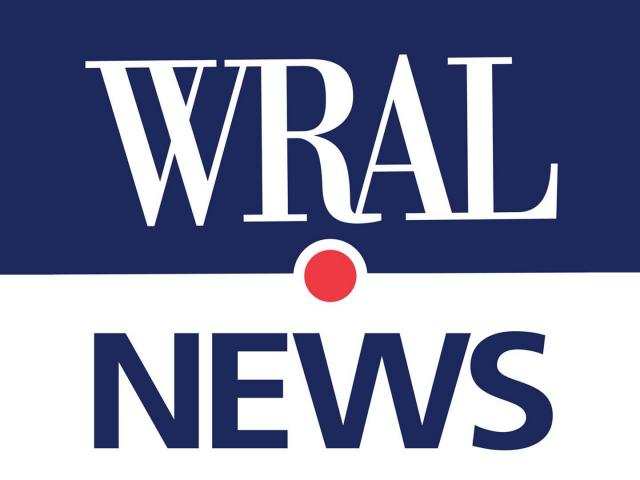News
Keep posted on what our department and its members are accomplishing on a daily basis.Sneha Narasimhan Shines at International Energy Leadership Workshop
Posted on July 25, 2024 | Filed Under: News
Sneha Narasimhan ’25, a Ph.D. candidate in Electrical Engineering at NC State, participated in the prestigious EPISTIMI-ACG-LUCE Summer Leadership Workshop in Athens, Greece. Selected as one of 25 graduate students globally, Narasimhan hone …
NC State Alum Ranbir Singh Creates Feed The Pack Endowment
Posted on July 24, 2024 | Filed Under: Alumni and News
Thanks to a generous gift from NC State ECE alum Ranbir Singh, the Feed the Pack Food Pantry has taken a critical step in ensuring the long-term sustainability of its efforts to combat food insecurity on NC State’s campus.
Exploring the Future of Wearable Technology: Bhavya Jain’s Summer at NC State
Posted on July 17, 2024 | Filed Under: Grad Students and News
Bhavya Jain, graduate researcher at NC State ECE, is developing cutting-edge wearable sensing technology and eco-friendly power sources. This summer, Jain led research on flexible-wearable sensors and a biocompatible battery.
First-year computer whiz is ready for new adventures at NC State
Posted on July 12, 2024 | Filed Under: Undergrad Students
Incoming first-year Alex Collazo Gonzalez has never lived outside of Puerto Rico, but his acceptance to NC State University’s College of Engineering is about to change everything. Planning to double major in electrical and computer engineer …
Exploring New Frontiers: Zander Selleseth’s Summer at NASA JPL
Posted on July 8, 2024 | Filed Under: News and Undergrad Students
Zander Selleseth ’25, an Electrical Engineering student at NC State, spent his summer at NASA’s Jet Propulsion Laboratory (JPL) in Pasadena, CA. As a visiting researcher in JPL’s Radar Concepts and Formulation Group, Selleseth explored cutt …
Qing Gu receives the 2023-24 R. Ray Bennett Faculty Fellow Award
Posted on July 3, 2024 | Filed Under: News
The recipient of the 2023-24 R. Ray Bennett Faculty Fellow Award is Qing Gu. The award recognizes high-achieving young faculty in the ECE Department to support their pursuit of cutting-edge research.
Michael Daniele Receives the 2024 William F. Lane Outstanding Teaching Award
Posted on July 2, 2024 | Filed Under: Awards and Faculty and News
Michael Daniele, associate professor in the Departments of Electrical and Computer Engineering and Biomedical Engineering, has received the 2024 William F. Lane Outstanding Teaching Award
ECE Makes Strides in US News Rankings
Posted on June 18, 2024 | Filed Under: News
NC State ECE climbs in U.S. News & World Report rankings: Computer Engineering is No. 12 among public universities and No. 24 overall, while among public schools, Electrical Engineering is No. 20.
Engineering for Connection: NC State Ph.D. Candidate’s Bench Design in National Spotlight
Posted on June 14, 2024 | Filed Under: Grad Students and News
Danny Krafft, an NC State ECE Ph.D. candidate, co-designed “The Connection Bench,” which earned national recognition.
New Technique Improves AI Ability to Map 3D Space With 2D Cameras
Posted on June 13, 2024 | Filed Under: AI/ML and Research
Because the technique works effectively with limited computational resources, it holds promise for improving the navigation of autonomous vehicles.
- Previous
- Next

Christina Koch is headed to the moon, exactly like she dreamed she would
In 2025, she will be one of four astronauts who will head to the moon as a part of Artemis II. The North Carolina State University graduate stopped by the WUNC studio during a recent visit back to the Tar Heel State.
Posted on May 9, 2024

Injectable Microchip Tracks Animal Health
Around the world, many pets and working animals are microchipped. It’s a simple process: A tiny transponder with an identification number is enclosed in a rice-grain-sized cylinder and injected under the skin, so that if an animal is lost it can be identified. This new devices does more, including tracking and reporting heart rate, breathing, movement, and temperature sensing in a 4-mm-wide package.
Posted on March 12, 2024

NC State innovation on display at CES 2024 in Las Vegas
Posted on January 11, 2024

Stress Monitors for Plants Can Spot Dehydration
In a forthcoming paper to be published in IEEE Transactions on AgriFood Electronics(TAFE), James Reynolds, a postdoctoral research scholar at NC State’s iBionicS Lab and first author of the paper, and fellow researchers at North Carolina State University explored how plant tissue’s impeding of electrical current can be monitored to identify plants under stress with relative immediacy—less than an hour, in some cases.
Posted on December 11, 2023

‘We’re hitting new limits.’ NC quantum computing bullish on a coveted breakthrough
Superconductors, the other prominent approach to quantum computing, are the focus of North Carolina State University and its partner corporation, IBM. Nicknamed “chandeliers,” IBM’s machines are gold-plated, multi-level apparatuses with a progression of wires and tubes funneling down to single silicon processor chips. While Duke has ion-trap computers in the Triangle, NC State researchers remotely access the chandeliers, which are housed at the IBM facility in Yorktown Heights, New York. “Each technology kind of has its strength,” said Daniel Stancil, executive director of the IBM Quantum Hub at NC State. “I think there have been some significant developments in the hardware in the past year.”
Posted on December 4, 2023

Energy Harvesting for Wearable Technology Steps Up
Wearable devices, like nearly every other piece of tech, need energy. Fortunately, though, at wearables’ modest power budgets, energy is effectively everywhere. It’s in the sun’s rays and radio waves, the skin’s sweat and body heat, a person’s motion and their footfalls. And today, technology is maturing to the point that meaningful amounts of these energy giveaways can be harvested to liberate wearables from ever needing a battery. Which seems plenty attractive to a range of companies and researchers.
Posted on November 1, 2023
